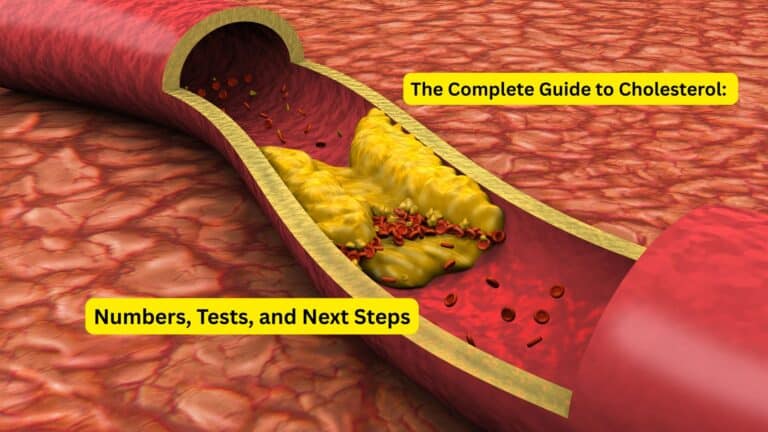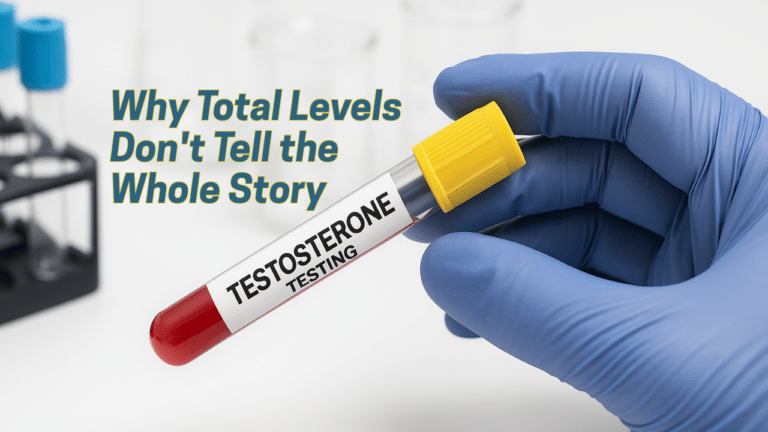Your hormones orchestrate countless essential functions throughout your body, from regulating metabolism and reproduction to controlling growth and mood. However, these delicate chemical messengers face constant interference from an invisible threat lurking in everyday products, food, water, and air. Endocrine-disrupting chemicals (EDCs) represent one of the most significant yet underrecognized health challenges of our time, with the potential to alter hormone function and contribute to a wide range of health problems across your lifetime.
What Are Endocrine Disruptors?
Endocrine disruptors encompass a diverse group of natural and synthetic chemicals that interfere with your body’s hormone systems in multiple ways. These substances can hijack your endocrine system by mimicking natural hormones, blocking hormone receptors, or disrupting the production and breakdown of hormones themselves.
These chemicals alter hormone synthesis, secretion, receptor binding, and metabolism, creating a cascade of effects that can impact virtually every aspect of your health. Unlike many toxins that require high doses to cause harm, endocrine disruptors can trigger significant biological effects even at extremely low concentrations—sometimes at levels found in typical environmental exposures.
Common examples include BPA, phthalates, PFAS, pesticides, heavy metals, and flame retardants, each with unique mechanisms of action but all sharing the ability to disrupt normal hormonal communication. What makes these chemicals particularly concerning is their ubiquitous presence in modern life, making complete avoidance nearly impossible.
The timing of exposure plays a crucial role in determining health outcomes. Hormonal systems are especially vulnerable during critical developmental windows, including fetal development, infancy, puberty, and pregnancy, when even small disruptions can have lasting consequences.
Sources of Hormone Disruptors in Everyday Life
Understanding where these chemicals hide in your daily environment represents the first step toward reducing exposure and protecting your hormonal health. Unfortunately, endocrine disruptors have become so integrated into modern manufacturing and agriculture that they contaminate multiple pathways simultaneously.
Food and Water Contamination
Your diet and drinking water serve as major routes of EDC exposure. Pesticide residues on conventionally grown fruits and vegetables introduce chemicals like atrazine and organochlorines directly into your food supply. Fish and seafood can accumulate heavy metals, dioxins, and persistent organic pollutants from contaminated waterways.
High prevalence of EDC contamination exists in global freshwater sources, affecting both drinking water supplies and aquatic ecosystems. PFAS chemicals, often called “forever chemicals” due to their persistence, have been detected in water systems worldwide, creating long-term exposure risks that are difficult to eliminate.
Plastics and Packaging
Plastic products represent one of the most significant sources of EDC exposure in daily life. BPA, commonly found in polycarbonate plastics and can linings, can leach into food and beverages, especially when heated. Phthalates, used to make plastics flexible, migrate from packaging materials, toys, and medical devices into the environment and your body.
Food packaging, storage containers, and even receipts printed on thermal paper can transfer these chemicals directly to items you touch and consume. The “new car smell” and plastic odors often indicate the presence of volatile EDCs being released into your breathing space.
Personal Care Products
Your daily beauty and hygiene routine may expose you to numerous endocrine disruptors. Parabens, used as preservatives in cosmetics and personal care products, can mimic estrogen in your body. Synthetic fragrances often contain phthalates, while some sunscreens include UV filters that demonstrate hormonal activity.
Antibacterial soaps containing triclosan, nail polish, hair dyes, and even some toothpastes can introduce EDCs through skin absorption and ingestion. The cumulative effect of multiple products used daily creates a significant exposure burden that many people never consider.
Household and Industrial Chemicals
Your home environment harbors numerous sources of endocrine disruptors, from flame retardants in furniture and electronics to cleaning products containing various synthetic chemicals. Dioxins, released from industrial processes and waste incineration, can contaminate the air you breathe and surfaces in your home.
Non-stick cookware, stain-resistant fabrics, and waterproof clothing often contain PFAS chemicals that can persist in your body for years after exposure. Even dust in your home can accumulate EDCs from various sources, creating ongoing exposure through inhalation and ingestion.
Health Impacts of EDC Exposure
The health consequences of endocrine disruptor exposure span multiple organ systems and can manifest years or even decades after initial contact. Research continues to reveal connections between EDC exposure and various health conditions, with some of the strongest evidence emerging in specific areas of concern.
Reproductive Health Effects
Endocrine disruptors can significantly impact fertility and reproductive function in both men and women. These chemicals interfere with sex hormone production and function, potentially leading to reduced sperm quality, irregular menstrual cycles, and difficulties conceiving. Some EDCs increase the risk of hormone-sensitive cancers, including breast, prostate, and ovarian cancers.
Pregnancy outcomes can also be affected, with certain EDCs linked to miscarriage, preterm birth, and birth defects. The developing reproductive system is particularly vulnerable during fetal development, when exposure can program lifelong changes in hormone sensitivity and function.
Thyroid Disruption
Your thyroid gland, which regulates metabolism, growth, and development, represents a frequent target of endocrine disruption. Recent meta-analyses demonstrate significant associations between EDC exposure and increased thyroid cancer risk, particularly with flame retardants, phthalates, and heavy metals.
Beyond cancer risk, EDCs can interfere with thyroid hormone production and regulation, potentially contributing to hypothyroidism, hyperthyroidism, and autoimmune thyroid conditions. These disruptions can affect energy levels, weight management, temperature regulation, and cognitive function.
Metabolic Consequences
The relationship between endocrine disruptors and metabolic health has become increasingly clear through scientific research. EDCs contribute to obesity, diabetes, and metabolic syndrome by interfering with hormones that regulate appetite, glucose metabolism, and fat storage.
Some chemicals, dubbed “obesogens,” can promote weight gain by altering the development and function of fat cells, disrupting appetite-regulating hormones, or interfering with metabolic processes. This connection helps explain why traditional approaches to weight management sometimes fail to address underlying hormonal imbalances caused by environmental factors.
Neurodevelopmental Risks
The developing brain shows particular vulnerability to endocrine disruption, especially during pregnancy, infancy, and childhood. EDC exposure during these critical periods can affect cognitive development, behavior, and learning abilities. Some studies link prenatal EDC exposure to attention deficit disorders, autism spectrum conditions, and reduced IQ scores.
Hormones play crucial roles in brain development, and disruption of these signals during sensitive windows can create permanent changes in brain structure and function. The full scope of these effects may not become apparent until years after the initial exposure occurs.
Who Is Most at Risk?
While everyone faces some level of EDC exposure in the modern world, certain populations bear disproportionate risks due to biological vulnerability, higher exposure levels, or reduced capacity to metabolize and eliminate these chemicals.
Fetuses, infants, children, and pregnant women represent the most vulnerable populations due to their developing endocrine systems and higher metabolic rates. During fetal development, hormones guide the formation of organs and body systems, making any disruption potentially catastrophic for normal development.
Critical life windows include prenatal development, when organ systems form and hormone sensitivity patterns establish; infancy and childhood, when continued growth and development occur; and puberty, when reproductive systems mature and adult hormone patterns emerge. Pregnancy represents another vulnerable period when maternal EDC exposure can affect both mother and developing child.
Occupational exposure creates additional risks for workers in agriculture, manufacturing, and industries that use or produce EDCs. Communities near industrial sites, agricultural areas, or waste facilities may face higher environmental exposure levels through contaminated air, water, and soil.
Reducing Your Exposure
While completely eliminating EDC exposure remains impossible in the modern world, strategic choices can significantly reduce your exposure burden and protect your hormonal health. The key lies in identifying major sources of exposure and implementing practical alternatives that fit your lifestyle and budget.
Food and Water Safety represents a foundational strategy for reducing EDC intake. Choose organic produce when possible, especially for fruits and vegetables known to have high pesticide residue levels. Install a quality water filtration system to remove contaminants from your drinking water, and consider glass or stainless steel containers for food storage instead of plastic.
Smart Plastic Choices can dramatically reduce your exposure to BPA and phthalates. Avoid heating plastic containers or putting them in the dishwasher, as heat increases chemical leaching. Look for plastic recycling codes 3, 6, and 7, which often contain EDCs, and choose alternatives when possible. Replace old plastic food storage containers with glass, ceramic, or stainless steel options.
Personal Care Product Selection requires reading ingredient labels and choosing products with simpler, more natural formulations. Look for “phthalate-free” and “paraben-free” labels, avoid synthetic fragrances, and consider making some products yourself using basic ingredients like coconut oil, baking soda, and essential oils.
Household Environment Improvements focus on reducing indoor air pollution and dust accumulation. Use natural cleaning products or make your own using vinegar, baking soda, and castile soap. Choose furniture and textiles that don’t contain flame retardants, and ventilate your home regularly to reduce indoor chemical concentrations.
Walk-In Lab plays a crucial role in this protection strategy by offering convenient, affordable hormone testing that can identify imbalances potentially linked to EDC exposure. Regular monitoring helps detect problems early when interventions may be most effective, guiding your prevention efforts and alerting you to the need for medical evaluation.
Statistics Snapshot
The scope and impact of endocrine disruptor exposure reveal the magnitude of this environmental health challenge:
- Economic burden: The annual U.S. disease burden from EDC exposure reaches $340 billion, reflecting healthcare costs and lost productivity
- Chemical diversity: Over 1,000 chemicals have been identified as potential endocrine disruptors, with new ones discovered regularly
- Cancer connections: Significant associations exist between EDC exposure and thyroid cancer risk, particularly for flame retardants and heavy metals
- Water contamination: High prevalence of EDC contamination affects global freshwater sources, creating widespread exposure risks
These statistics underscore the urgent need for awareness, prevention strategies, and monitoring of potential health effects through appropriate testing.
FAQ Section
What are endocrine disruptors?
Endocrine disruptors are chemicals that interfere with hormone production, release, or action, causing various health issues by mimicking, blocking, or altering normal hormonal signals. They can affect multiple hormone systems simultaneously and often cause effects at very low exposure levels.
Where are these chemicals found?
These chemicals appear in plastics, pesticides, cosmetics, household products, industrial pollutants, and contaminated water. Common sources include food packaging, personal care products, cleaning supplies, furniture, electronics, and agricultural chemicals used on food crops.
What health risks do they cause?
EDCs impact fertility, brain development, metabolism, and thyroid function while increasing risks for certain cancers. They can contribute to reproductive disorders, developmental problems, metabolic diseases, and hormone-sensitive cancers through various mechanisms of action.
Who is most vulnerable?
Fetuses, infants, children, and pregnant women face the highest risks due to their developing endocrine systems and critical windows of vulnerability. Occupational exposure and living near industrial sites can also increase risk levels for adults.
How can I reduce my exposure?
Practical strategies include avoiding plastics with BPA and phthalates, choosing organic foods when possible, using natural personal care products, filtering drinking water, and improving indoor air quality. Regular hormone testing can help monitor the effectiveness of these prevention efforts.
Conclusion
Environmental factors that disrupt hormones represent a significant but manageable health challenge in our modern world. While the widespread presence of endocrine-disrupting chemicals in everyday products, food, and water creates unavoidable exposures, understanding their sources and health impacts empowers you to make informed choices that can significantly reduce your risk.
The key to protecting your hormonal health lies in combining awareness with action—making strategic consumer choices, advocating for safer products and policies, and monitoring your hormone levels to detect potential problems early. Walk-In Lab’s comprehensive hormone testing services provide the monitoring tools you need to identify imbalances that may be linked to environmental exposures, enabling you to take proactive steps to protect your health and that of your family. Through education, prevention, and appropriate monitoring, you can minimize the impact of environmental hormone disruptors while supporting your body’s natural endocrine functions for optimal long-term health.
This content is for informational purposes only and not a substitute for professional medical advice. Always consult with your healthcare provider before making changes to your health management plan.






